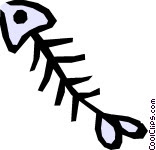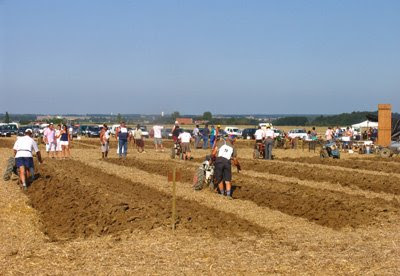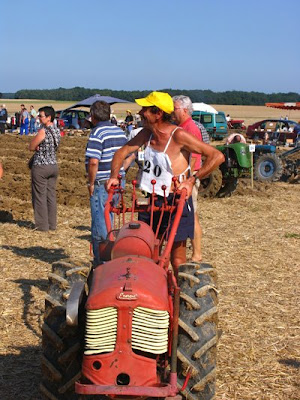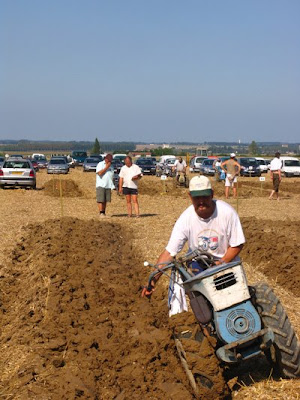Demonstrators in places like Angers, Blois, Nantes, Pouilly-sur-Loire, and Sancerre as well as Arbois, Avignon, Bergerac, Bordeaux Cognac, Colmar Epernay, Gaillac and Nîmes covered up the names of wine towns and villages with the word censored.
The most recent proposal to ban free wine tasting has enraged the wine industry. According to decanter.com: ‘The amendment, known as 'article 24', was tabled by health minister Roselyne Bachelot and discussed by the cabinet last week. The proposal, which outlaws all 'free alcoholic drinks with the intention of promotion', would effectively ban wine tastings in the country.’ Apparently Bachelot wants this to be law by the end of January 2009, although she is not opposed to amended the Loi Evin in favour of making it legal to mention wine on the internet.
If passed it could mean paying for all wine tastings both amateur and professional including at Vinexpo, Salon des Vins de Loire and the Bordeaux en primeur tastings. It would make France the laughing stock of the wine world and presumably would have profound repercussions on how the business of wine in France is conducted.
It seems amazing that France, of all places, is rushing down the same disastrous path that the Americans took with Prohibition in 1920.
In Sancerre the demonstrations took place while snow apparently for the first time since 1950 that it has fallen here in October.
For anyone wanting to read more about the reasons for the demonstrations here is a press release in French from Benoît Roumet, the director of the BIVC – the promotional body of the Loire's Central Vineyards, adapted from a release by Vin et Société.
'Le 30 octobre 2008, dans les vignobles du Centre-Loire comme un peu partout sur les terres viticoles de France, la filière vin se mobilise pour défendre son droit à exister. Une opération organisée pour ne pas « tomber dans le panneau » des censeurs !
Le vin pourrait se voir enfin reconnaître l’accès légal à Internet ! Tant mieux : pour beaucoup de petits opérateurs, c’est devenu un moyen de communication vital pour faire connaître leurs produits.
Le gouvernement pourrait combler enfin un vide juridique, préjudiciable à tous les professionnels du vin et de l’information. Rappelons qu’en 1991, le législateur n’avait pas pris en compte le média Internet, alors inexistant. La filière réclamait juste une mise à jour de la loi, dans le respect de l’encadrement du Code de santé publique.
Une opération symbolique pour « ne pas tomber dans le panneau »
Si l’aboutissement de ses revendications – légitimes – sur internet serait un soulagement pour elle, d’autres interdits, loin d’être levés, menacent la filière vitivinicole française ! C’est pourquoi, elle a unanimement décidé de mener une vaste opération nationale, en recouvrant symboliquement les panneaux des villages viticoles. Une manière de protester contre la multiplication des interdits et de montrer que la défense du vin est celle d’une culture au cœur de notre patrimoine et de nos terroirs.
La filière refuse d’être diabolisée ! Elle refuse de tantôt servir de faire-valoir culturel, gastronomique, économique, et tantôt de servir de bouc émissaire. Or, elle est actuellement attaquée de tous côtés : sur la fiscalité, sur la restriction des lieux de vente, sur la vente au forfait dans les salons ou dans les foires au vin. Les médias et les créateurs sont dans l’aléa juridique permanent lorsqu’ils parlent de vin. Le dernier exemple en date nous vient d’une équipe de tournage d’une chaîne nationale venue réaliser un reportage à Sancerre et à qui la direction a strictement interdit de faire la moindre référence au vin !!!
Le vin semble ainsi devenir un mot honteux et dangereux puisque toute évocation du sujet peut être requalifiée en publicité. Plusieurs journaux condamnés en ont fait les frais !
Une filière responsable, aujourd’hui très fragilisée
Rappelons que la consommation de vin en France a profondément changé en 50 ans, grâce notamment aux efforts de la filière viticole pour valoriser ses produits au travers des terroirs, des cépages et du goût. Cette consommation a été divisée par 2 en 25 ans ; elle s’est concentrée sur une consommation qualitative et ne concerne pratiquement pas les jeunes. Autrement dit, elle repose sur un modèle de consommation responsable, dont l’équilibre est fragile. Demain, c’est la survie de la viticulture française qui est en jeu. Il faut en avoir conscience.
Quand on sait qu’en Espagne, on considère le vin comme un allié dans la lutte contre les comportements excessifs et que le roi Juan Carlos soutient sa viticulture pour faire de sa nation le futur premier pays producteur, le vignoble français est en droit de se poser des questions concernant les mobiles du gouvernement alors qu’à Sancerre même Nicolas SARKOZY, à l’époque candidat à la présidence de la République, avait clairement expliqué qu’ « …assimiler le vin au tabac ou à la drogue est une erreur… ce n’est pas seulement un activité économique mais une tradition, une identité, un savoir-faire français ».
La filière vitivinicole a fait la preuve de son engagement citoyen, en défendant une consommation plaisir et responsable, conforme aux repères de l’OMS, notamment à travers la création d’un site dédié (www.vinetsociete.fr), en s’associant largement à la Sécurité Routière dans la lutte contre le non-respect du 0,5g au volant et en oeuvrant pour le dialogue au sein du Conseil de modération et de prévention.
Les professionnels des vignobles du Centre-Loire attendent le gouvernement de pied ferme et ne se laisseront pas abuser par des effets d’annonce. Ils attendent des évolutions rapides et concrètes afin de pouvoir se défendre et développer leurs vignobles sereinement dans un environnement international de plus en plus concurrentiel.'



















































